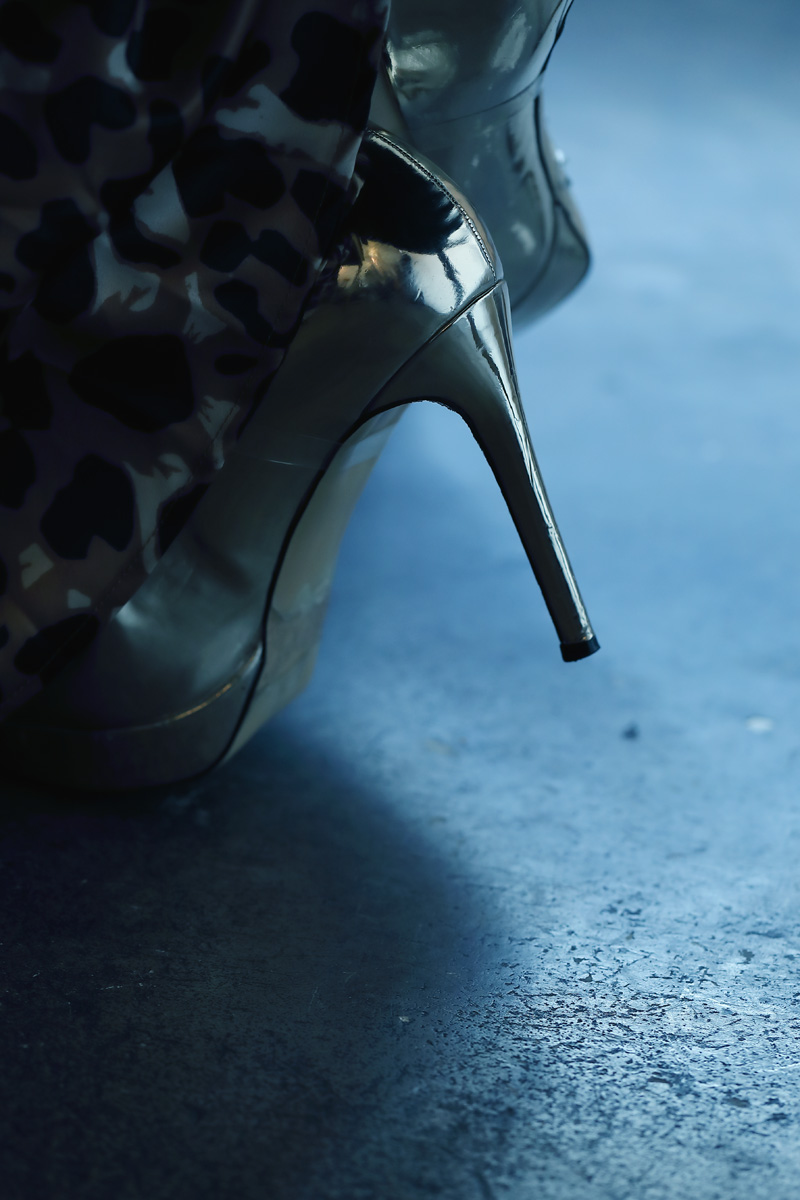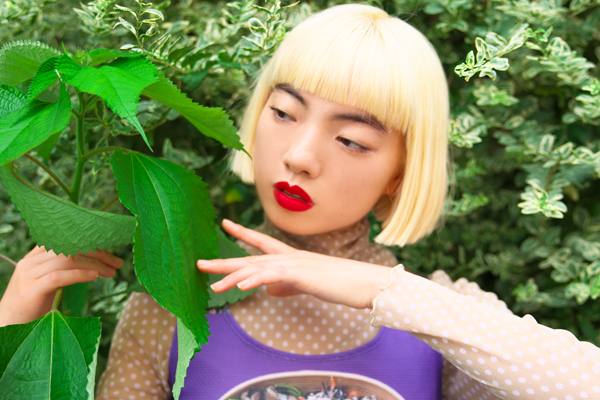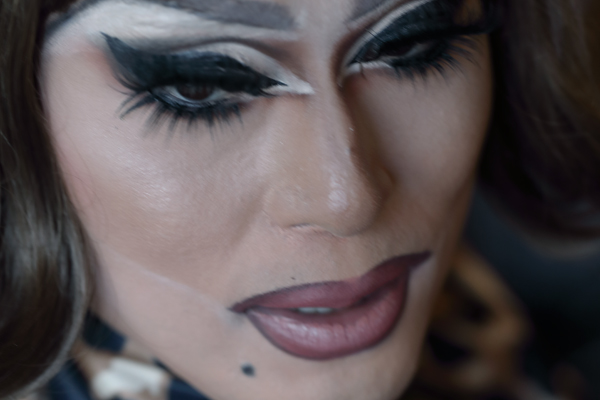ドラァグクイーンという生き方。
Feature | 2025.9.24

様々なジャンルで活躍する
ドリアン・ロロブリジーダ。
その独創的な美意識に、多くの人が魅せられる。
《ドラァグクイーン》
ドリアン・ロロブリジーダ Durian Lollobrigida
東京都出身。まだ学生だった2006年12月にドラァグクイーンデビューし、
新宿二丁目発のディーヴァユニット「八方不美人」、「ふたりのビッグショー」メンバーとして活動。
数々のイベントでのMCや、アーティストのコンサート、PV、ファッションショーなどに出演し、
映画『エゴイスト』『ストレンジ』にも出演。
奇抜な衣装に派手なメイク、盛ったヘアスタイルで圧倒的な存在感を放つドラァグクイーン。なかでも今、YouTubeをはじめドラマやエッセイ、さらに歌手として人気なのがドリアン・ロロブリジーダさんだ。そんなドリアンさんに、まずはドラァグクイーンとは、をお聞きした。「ドラァグクイーンとはパフォーマーであり表現様式です。原型は1900年頃からあり、花開いたのは1980年代以降の、欧米のアンダーグラウンドシーンでした」。
ゲイシーンやディスコシーンから火が付いたドラァグクイーン、その名前の由来は?「ドラッグクイーンと表記されることが多くありますが、ドラッグは薬物のDRUGで、私たちはドラァグ(DRAG)、“引きずる”という意味です。これは男性が女性用の大きなドレスを、裾をずるずる引きずって着たことから付いた呼び名という説があります。クイーンは女王という意味ですが、英語圏などではトランスジェンダーをからかってクイーンと呼ぶこともあるそうです。自分たちに投げかけられた侮蔑の言葉を逆手にとって『でも、私たちはクイーンなのよ、女王なのよ』と、矜持をもって肩書きとして付けた。粋な心意気でしょ」。
多くの人が混同するのがドラァグクイーンとLGBTQだ。「ドラァグクイーンとLGBTQは全くの別物ではありませんが、ただLGBTQという言葉自体は性的指向やジェンダーアイデンティティを指しています。どういった性別の人に魅力を感じるかや、自分がどういう性別と感じているかといったことです。一方でドラァグクイーンはある意味で、生業であり、肩書きなので、LGBTQという言葉とは区別をしていただきたいです」。しかし実際は、ドラァグクイーンにはゲイが多くいる。「男性のゲイだけでなく、女性のドラァグクイーンも多くいらっしゃいますし、いわゆるストレート男性のドラァグクイーンもいらっしゃいます」。
性別や性的指向に関係なく、誰でもなれるということ。では、何をすればドラァグクイーンなのか。「私の好きな『ジェイミー』というミュージカル映画に『ドラァグクイーンの唯一のルールは、ルールなんてないことだ』というセリフがあります。ドラァグクイーンという存在自体が社会が押し付けてくる“男とは、あるいは女とはこうあるべきだ”といった有形無形の圧力を高らかに笑い飛ばして、自分が好きな格好をすること。そこが私たちにとって大切なポイントです」。
YouTubeなどでドラァグクイーンたちが口パクでステージに立っているのをよく見かける。「それは『リップシンク』といって、私たちの主な芸当のひとつです。ただし、世間でいう単なる口パクではなく、そこにはもっと深いものがあります。名曲を歌う古今東西のディーヴァと同化して、その曲のブレスの位置や息づかい、ビブラートの出し方を完全に自分のなかに取り込んで、さらに歌い手が曲に込めたメッセージや情熱を体現する。リップシンクは実に奥が深いのです」。
ドリアンさんが初めてドラァグクイーンを知ったのは高校3年生の頃だったという。「近所に、仲良くしてもらっていたゲイのお姉さんグループがいて、その中にドラァグクイーンをやっていた方がいたんです。年末にパーティールームを借り切ってカラオケ大会をしたのですが、そのとき、その方がバーン!とフルメイクで登場しました。それはもう格好良くってビックリしました。雷に打たれたような衝撃を受けて、そこでドラァグクイーンになることを決めました」。
それから約20年、ドリアンさんはドラァグクイーンで生きている。「ドラァグクイーンになった当初は、化粧をして衣装を着て人前に出るだけで楽しかったけど、それはすぐに飽きてしまった。やっぱり一番は、自分のパフォーマンスをお届けして、それに感動してくれる方がいらっしゃること。見せること、ではなく “魅せること”にロマンや魅力を感じ、こんな楽しいことは他にないと思っています」。いまでは映画やドラマに出演し、ラジオのパーソナリティも務め、歌手として舞台に立ち、もちろんリップシンクもこなす。“魅せる”ドリアンさんはますます活躍の場を広げている。
The lifestyle of a drag queen.
Durian Lollobrigida is active in various genres,
and many are captivated by her unique aesthetic sensibility.
With her bold makeup, flamboyant costumes, and elaborate hairstyles, a drag queen commands an overwhelming presence. One of the most popular today is Durian Lollobrigida, a multi-talented artist who has gained a following through her work on YouTube, in dramas, and as a singer. Durian explains that a drag queen is a performer and a form of expression that originated around 1900 and flourished in the underground scenes of the US and Europe from the 1980s onward.The name “drag queen” often causes confusion. Durian clarifies that it is not “drug” (as in the substance) but “drag,” meaning to trail or pull. The name likely came from men dragging the hems of large women’s dresses. The “queen” part was a derogatory term used to mock transgender people, but it was defiantly reclaimed as a title of pride.
Durian stresses that drag is distinct from LGBTQ identity. While the term LGBTQ refers to a person’s sexual orientation or gender identity, being a drag queen is a profession or a title. She notes that while many drag queens are gay, the community includes gay women and heterosexual men as well, as anyone can become a drag queen. The core philosophy of drag is to “boldly laugh at the social pressure to be a certain way” and to wear whatever you love. As a line from the musical Everybody’s Talking About Jamie says, “The only rule of a drag queen is that there are no rules.”
A key part of drag performance is lip-syncing, which Durian says is a profound art form that goes far beyond simple mouth movements. It requires fully embodying a song’s passion, breathing, and vibrato to truly embody the original diva’s performance.Durian’s own journey began in high school when she saw a friend perform in full drag and was “struck by lightning.” That night, she decided to become a drag queen. After 20 years, she still loves her profession, but the initial joy of simply dressing up has been replaced by a deeper purpose. “It’s about delivering a performance that moves people,” she explains. “I find a certain romance in ‘charming’ an audience, rather than just ‘showing’ them something.” Durian continues to expand her creative work in films, dramas, and music, enchanting audiences with her multifaceted performances.




ドラァグクイーンの美学、それはマイノリティからマジョリティへの、いかしたアンチテーゼ。
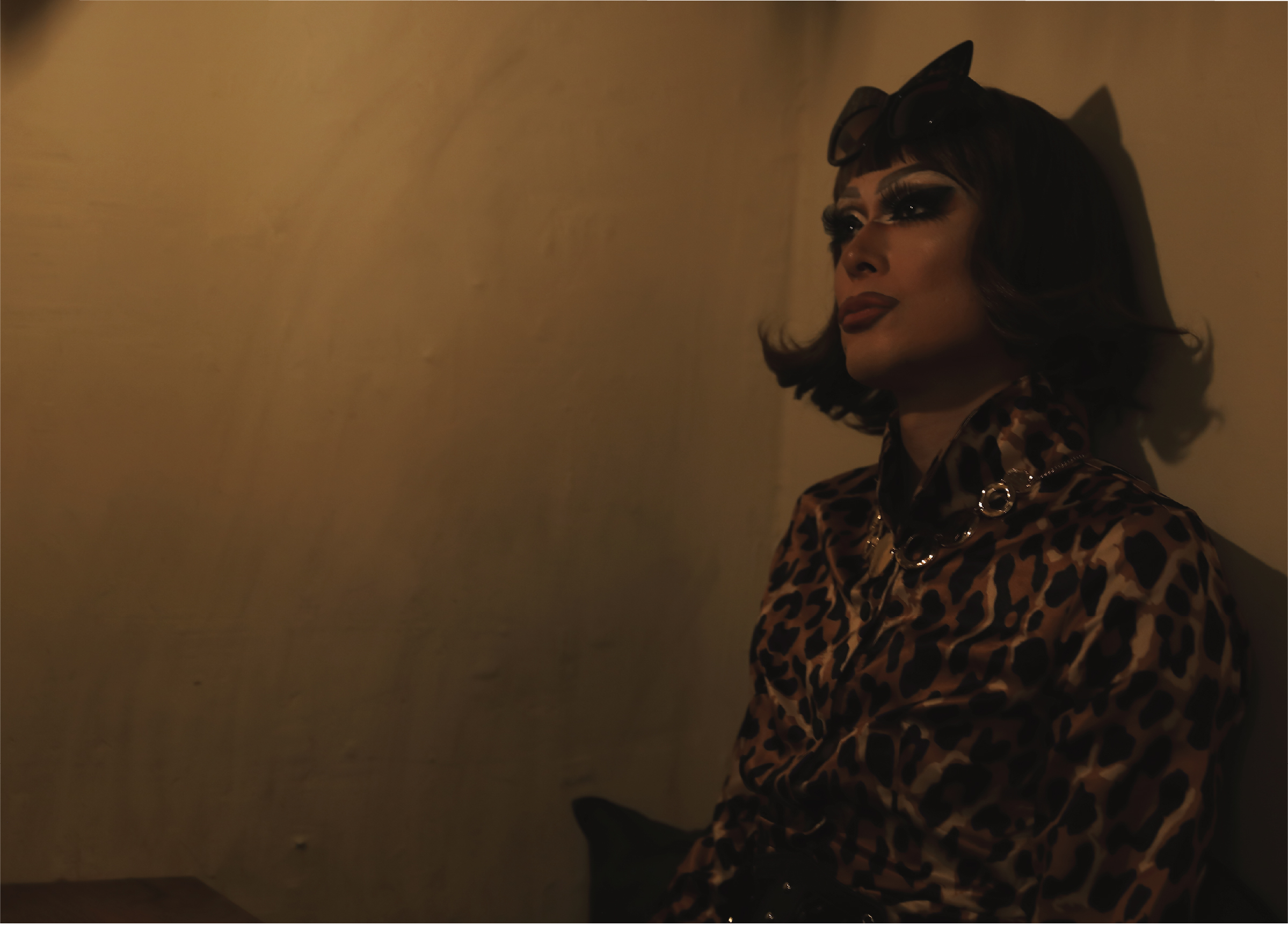
海の向こうでは以前から、ドラァグクイーンは人気者だった。1994年には、3人のドラァグクイーンが主人公のロードムービー「プリシラ」がヒット。アカデミーの衣装デザイン賞も受賞した。その1年前にはドラァグクイーンの第一人者になるル・ポールの「Supermodel」が全米ダンスチャートで2位に。ル・ポールはその後、リアリティコンペ番組「RuPaul’s Drag Race」を企画・司会。ドラァグクイーンたちがメイクやファッション、パフォーマンスを競うこの番組はエミー賞を受賞。世界各国でスピンオフが制作され、世界的な現象になった。
日本でもマツコ・デラックスやミッツ・マングローブなどが人気を集め、さらにドラァグクイーンを主人公にしたミュージカル「ジェイミー」や「キンキ―ブーツ」も上演され、YouTubeでもさまざまなドラァグクイーンたちが活躍している。そんななか、ドリアンさんが感じているドラァグクイーンが置かれている状況は?「私が始めてから20年ほどが経っていますが、その間にドラァグクイーンの立ち位置や存在意義が変わってきていると思っています。もともとはアンダーグラウンドシーンにいるマイノリティたちが社会と戦うためのひとつの表現方法だった。男は男らしくしろといわれる時代に、敢えて女性のドレスを着て、お化粧をして、マジョリティに対しての強烈な反抗だったわけです」。
そこから徐々に、活動の場がメジャーシーンへと移ってきた。「基本的にはドラァグクイーンの “らしさ” や “美学” はマジョリティへのアンチテーゼにあると思っています。ただ、時代の流れは変えられないわけで、今のようにお子さんからお年寄りまでがいらっしゃるような場所にドラァグクイーンが登場するようになる時、どんな役割を果たせば良いのかというということは常に考えています」。
ドラァグクイーンが今の社会にメッセージするべきことは、ダイバーシティの大切さだとドリアンさんはいう。「ダイバーシティ、多様性ですね。世の中にはいろいろな人がいて、いろいろな生き方がある。それを楽しんだらいいということを体現している存在がドラァグクイーンなのではないでしょうか。まだ日本ではマイノリティやLGBTQを巡るさまざまな権利などは発展途上にありますが、そこにはこんな人たちがいるんだよと、可視化する役割も担っています」。
全身を美しく飾り立てているドリアンさん、その美意識の在処はどこにあるのだろう。「私に限らず、ドラァグクイーンには様々なアートやカルチャーに造詣が深い方が多くいらっしゃる。そういった方は綺麗な日本語を使っていたり、美しいものをたくさん知っていたりする。そうして身についた美的感覚のようなものを、それぞれが体現しているのではないでしょうか」。
さらにドリアンさんは語る。「日本では、ドラァグクイーンは素顔を見せないことが美学と考えている先輩もいらっしゃいます。でも私は素顔でもメイクをした顔でもメディアに出る、両A面としてやらせてもらっています。私がお伝えしたいのは “みんなもっと好きなことをやればいい” です。私は好きでドラァグクイーンという仕事をやっている。クイーンという名を冠している以上は女王でなければいけないから気高く、威勢良く、みなさんの前に出ていく。好きから広がる世界が大切だと考えています」。
ルールに縛られず、自由を楽しむ。そこにドリアンさんの美意識の在処があるような気がした。
The aesthetics of drag: A cool antithesis to the majority from the minority.
Across the globe, drag queens have been popular for some time. In 1994, the road movie The Adventures of Priscilla, Queen of the Desert was a hit, winning an Academy Award. A year earlier, RuPaul’s song “Supermodel” topped the U.S. dance charts. RuPaul later created the reality competition show RuPaul’s Drag Race, which has since won an Emmy and become a global phenomenon with spin-offs worldwide.
In Japan, figures like Matsuko Deluxe and Mitsu Mangrove have become popular, and musicals like Jamie and Kinky Boots have been performed. Amid this growing popularity, Durian reflects on the current position of drag queens. “It’s been about 20 years since I started, and in that time, I believe the role and significance of a drag queen have changed,” she says. “Originally, it was a form of expression for minorities in the underground to fight against society. In an era when men were told to be ‘manly,’ putting on a dress and makeup was a powerful act of defiance against the majority.”
Durian notes that the drag scene has gradually moved into the mainstream. “The essence and aesthetic of drag queens are fundamentally an antithesis to the majority,” she says. “However, you can’t stop the flow of the times. When drag queens appear in places with audiences of all ages, I constantly think about what role we should play.”
Durian believes the message drag queens should convey to society today is the importance of diversity. “We are a physical embodiment of the idea that there are all kinds of people in the world and all kinds of ways to live,” she explains. In Japan, where the rights of minorities and LGBTQ people are still developing, drag queens also play a crucial role in increasing their visibility.
Durian, whose entire look is beautifully adorned, was asked where her aesthetic comes from. “It’s not just me; many drag queens have a deep knowledge of various arts and cultures,” she says. “I think we all embody a sense of beauty that we have acquired through our understanding of beautiful language and beautiful things.”
Durian adds that while some senior drag queens in Japan believe it is an aesthetic to never show one’s bare face, she takes a different approach. “I appear in the media with both my makeup-free face and my full-drag face, like a double A-side single,” she says. “My message is that everyone should do what they love more. I do drag because I love it. And since I bear the title of ‘queen,’ I must be dignified and bold when I appear before everyone. I believe that a world that expands from what you love is what’s most important.”
Durian’s “the Source of Aesthetic Sensibility” appears to be rooted in enjoying freedom and refusing to be bound by rules.
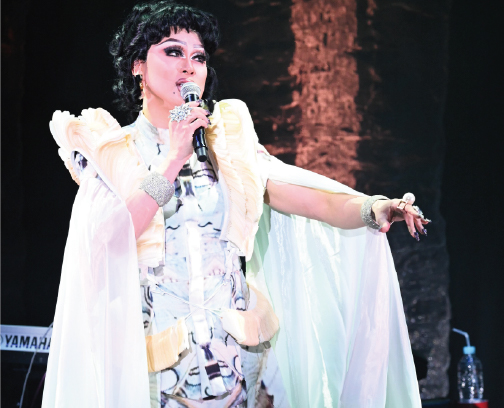
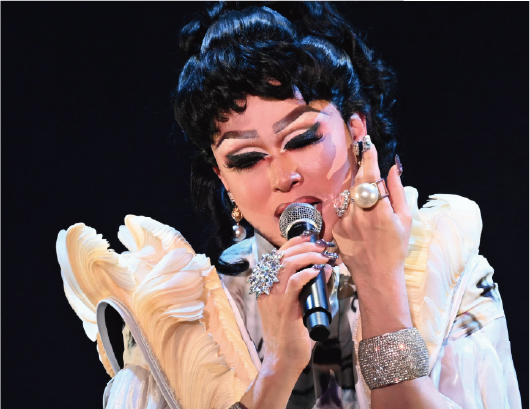
©oka rieko

閲覧中の特集はこちら
